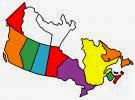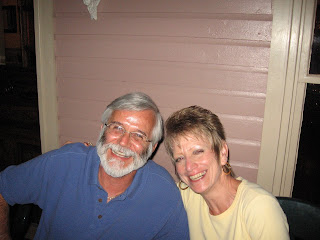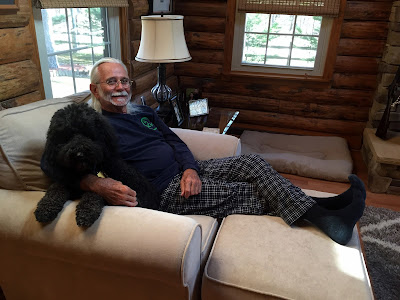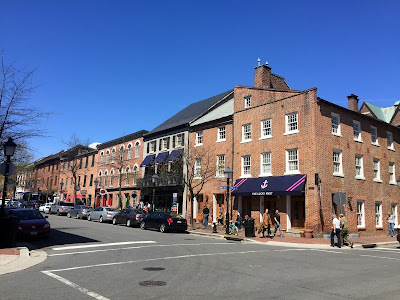Monument Valley has been on our to do list since we went on the road ten years ago. Our travel plans and the weather never aligned until this year. It turned out to be well worth the wait as it is a magnificent place.
As we got close, Agathlan, an ancient volcano core near Kayenta is the first sign that we are in for something unique. In the 1800's Kit Carson, who was sent by the government to clear out the Indians, renamed it El Capitan.
Our first view of the buttes and mesas of Monument Valley coming in from the West. Even though this is our first visit here, we have seen the place in so many movies it was like we had been here before.
And look who else was here! Wallace and Wanda were the first SKPs we met at RV Boot Camp in 2007. We have crossed paths with them many times over the years including in 2014 in Alaska. They are heading back to Alaska to replenish their supply of fish. We had a nice time getting caught up and are looking forward to following their trip north.
Monument Valley is a place where you can sit and watch all day as the changing light changes the look of the landscape. The first morning I got up early and went to watch the sunrise.
Very neat seeing the sun peeking through the rocks and watching the color of the sky and clouds change as the sun came up.
This is the view from the East. You may recognize it from the movie Forrest Gump.
Down the road from the valley is the formation that gives the town, Mexican Hat, its name.
We were told the drive up Moki Dugway was not to be missed. The road was constructed in 1958 by a mining company to transport ore from the mine. The road climbs 1100 feet to the top of the mesa. It is gravel and while only three miles, it has many switchbacks and not one guardrail.
The view of the Valley of the Gods with its many temple like rock formations is spectacular. The road is limited to vehicles less the 28 feet and under 10,000 pounds. That said, we saw a couple of pickups pulling boats up the road. Moki Dugway is a neat drive that can even be done in a car.
Not sure if this is a natural hill or a pile of mine waste, but it looks like one of those sand art works from the 1960's.
We stayed at Goulding's Lodge, Trading Post, Restaurant, Gas Station, Grocery Store, Museum, Theater, Lodge and RV Park. Goulding's started as a trading post in a tent in 1924 by Harry and his wife Mike.
When the Depression economy hurt their business Harry went to Hollywood with pictures of the valley landscape. He convinced director John Ford to shoot movies here helping the local economy. In 1939 Stagecoach was the first movie shot here. A few others are Easy Rider, Forrest Gump, Eiger Sanction, Thelma and Louise, The Lone Ranger and The Lego Movie. There is one room with exhibits of the many movies shot here.
At the trading post Harry bartered with the Navajo for blankets, baskets and pottery to sell to tourists. The trading post is now a museum.
The John Wayne Cabin is where he stayed in 1939 during the filming of Stagecoach. He was in three other movies here over the years. Each evening at the Goulding's theater they show one of the John Wayne movies that was filmed here..
Classic view of the valley.
We did a couple short hikes from the RV Park. One went to this arch and another offered a view of the valley.
The valley is part of the Navajo Nation and many families still live there. You have to pay an admission which allows you to tour the museum and drive the loop road. We opted for a tour from the RV Park and were happy we did as the road is terrible. Here we are in front of the mittens. The right mitten has been used in car commercials.
The visitors center has a museum about the Navajo culture. Pictured are examples of male and female clothing and the Navajo Nation Seal woven in a basket. There is an excellent exhibit about the code talkers, Navajo who where used by the military during WWII to send messages over the radio in their native language. The Japanese never broke the code.
We opted for the sunset tour and where disappointed when a few clouds moved over the horizon blocking the sun as it set for most of the tour. It was still great, just not what we wanted.
The classic view from the visitors center.
Could be a scene from a movie or a look back 200 years ago. You can take horseback tours of the valley.
John Ford Point, the site of many movie scenes and commercials.
At every turn there are new and interesting views.
The Totem Poles at sunset.
This strong woman is not to be messed with. I don't think it fell over after we left. Monument Valley was everything we expected with the beautiful, ever changing landscape. It is a bit out of the way but well worth the drive.































































